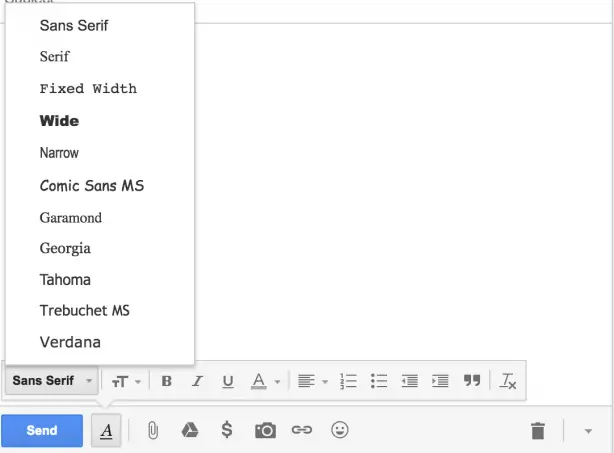In today’s Branding Lab lesson, we’ll walk you through the process of creating customer-facing branding material, and suggest places you can share this material to help amplify your brand’s reach.
Creating a Style Guide
Before you can share your brand, you have to put together a collection of branding materials that embody it. This is typically delivered in the form of a style guide. At minimum, a style guide includes your colors, your fonts or typefaces, and your logo. Over time, you should build out your style guide to include other repeatable brand elements like your business card design, your letterhead, and your favicon (the icon that appears in a website tab).
To kick off your style guide, we suggest beginning with the color palette that will define your brand. In total, we recommend selecting 5 colors. This includes your primary color (which you’ll use in your logo), along with four supporting colors. These should accent or contrast with each other, without overshadowing or clashing. Your color palette will vary depending on your brand’s aesthetic, but when it comes to real estate, you can’t go wrong with these colors:
Greens
Green hues are emblematic of growth and renewal, which can be associated with homes or the purchasing of a new home. Depending on your market, greens also gesture toward the “greenery” of the local landscape.
Browns and Tans
Brown and tan hues channel the materials commonly used in building and renovating houses. These colors can be particularly useful if you specialize in old homes and renovations.
Muted Blues and Grays
Blue and gray hues convey modernity, simplicity, and professionalism—three qualities that every buyer and seller wants from their home buying or selling experience.
Once you’ve selected five colors for your palette, (and if you haven’t done so already), identify one as your primary. When choosing your primary color, ask yourself: Which one best evokes your brand positioning statement? Which one would stand out the most on a white piece of paper, or a white computer screen background?
After you select your colors, it’s time to select your font. Your font or typeface will represent your brand everywhere, including your website and logo, but also your business card, online and print advertisements, letters, even emails.
Everything you create to message your brand should use this font. Therefore, you’ll want to pick one that’s widely accessible. For instance, if you use Google as your email provider, we recommend looking at what they provide as font options. In total they offer eleven different fonts:

Again, choose the font that best represents your brand and style. If you are creating a brand that has a more formal, professional vibe, consider a font with serifs (i.e., the small lines attached to the ends of a letter—see Garamond above for a classic example). If you’re creating a casual brand around qualities like simplicity and modernity, consider a sans-serif font with a softer look. Whichever font you choose, make sure it also looks good at different sizes (10pt, 12pt, 18pt, etc.), as you’ll be using this font for all your website titles (larger font size) as well as in your email signatures (smaller font size).
Finally, you’ll want to create your logo. While this may seem like a daunting task, there are several resources out there to help you create a logo without a designer or firsthand design experience. For more details, check out our post on the topic: How To Create Logos Without a Designer.
One way to start designing your logo is to select an icon, an item to associate your brand with. If you specialize in selling homes on the Jersey Shore, for instance, you might want to incorporate a beach ball or a sun umbrella. Or, if you sell homes near a golf course in Arizona, you might consider using a putter or a golf ball on a tee as your icon. Whatever you select, make sure that the icon will be attractive to your audience and resonate in your local market.
Importance of Social Media
Once you have your branding materials, it’s time to release them into the wild. The best place to start is social media.
While there are many upsides to social media, the best perk is the ability to extend your brand’s reach. Not only can you engage with your followers, but also with their extended networks, helping you pull new people in.
At a minimum, we suggest that you have social media accounts on Facebook, Instagram, and LinkedIn. We also recommend that you use a business page for Facebook, as well as a business account for Instagram. While your business pages should focus on highlighting your real estate company, that doesn’t mean you should only advertise listings and client reviews. After all, it’s not your inventory, but your personality, interests, and local expertise that serve as the foundation of your brand. By injecting these human elements into your business page posts, you’ll spark engagement and create a stronger connection with your audience.
To illustrate how personality can enhance your social media presence, consider the pictures on your page. Using a logo or professional headshot for your profile photo can promote your professionalism. For your cover image, however, consider a photo that will help your audience get to know you and your business on a more personal level. Instead of a photo of a beautiful listing, for instance, select a photo that captures your team or your clients. We’ve seen brokerages use snapshots of their agents at a company event, or photos of a real client in front of their new home One of our favorite examples comes from The Cape House team on Cape Cod, who have used a photo of a dog swimming in the ocean at sunset. The image feels fun and genuine, and suggests that The Cape House team are dog lovers, a quality that’s likely to stick out to their target consumer.
When it comes to posting content on your social media accounts, our advice is the same: mix it up. While a new listing is sure to get clicks, it’s not the only way you can drive people back to your site. In fact, if you only post links to listings, your audience will probably start tuning you out entirely. Instead, incorporate customer testimonials, company news (including new hires), or even just a photo of a great-looking cup a coffee from your favorite local place. By highlighting other businesses in your market, you can show you know the neighborhood and attract other people who like the same things. In real estate, making a personal connection when it’s not forced goes a long way.
Share Your Brand Homework:
Complete the steps below to begin sharing your brand with your audience and prospective clients:
1. Create your Logo
Read through our article, “How to Create a Logo without a Designer,” which lists several free tools to help you plan and design your own company logo Select the best option for you, identify an icon to represent your brand, and begin designing. Come up with 3-4 different logos, then share them with family and friends for feedback. If you’re active on social media, another option is to post all of your logo variations and ask your friends and followers for their opinions. People always love to give feedback on what they prefer. (Plus, the more comments you get, the more people will see your brand!).
2. Create your next month’s social media calendar
Use our “Social Media Calendar” instructions to plan out your next month’s posts. Try to schedule three posts a week on Facebook, LinkedIn, and Instagram. Keep at it for a full month, then, check your social media and website reporting and analyze how it went. Don’t slack off: to see your investment pay off, you’ll need post consistently for at least a month. An effective social media presence is something that takes time to build, but once people can rely on you to post frequently, you will build up a genuine audience.
Tomorrow, we’ll showcase some expert advice from The Cape House Team on how they built their brand from scratch.






